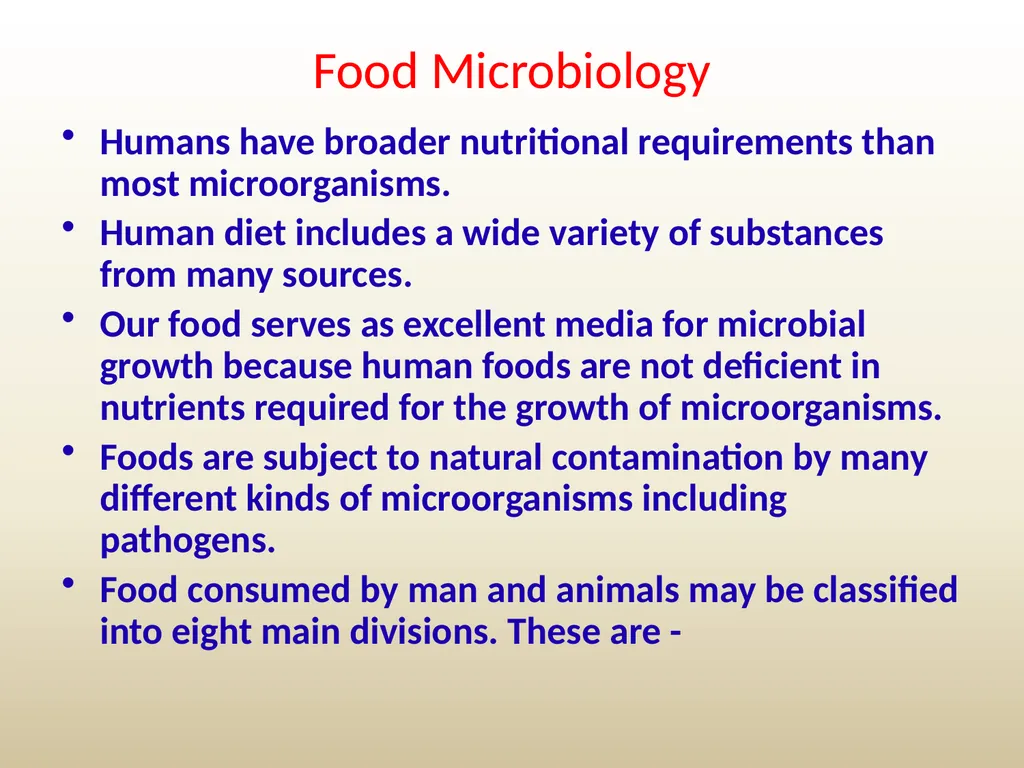
Author : alexa-scheidler | Published Date : 2025-05-23
Description: Food Microbiology Humans have broader nutritional requirements than most microorganisms. Human diet includes a wide variety of substances from many sources. Our food serves as excellent media for microbial growth because human foods are notDownload Presentation The PPT/PDF document "" is the property of its rightful owner. Permission is granted to download and print the materials on this website for personal, non-commercial use only, and to display it on your personal computer provided you do not modify the materials and that you retain all copyright notices contained in the materials. By downloading content from our website, you accept the terms of this agreement.
Here is the link to download the presentation.
"Food Microbiology Humans have broader nutritional"The content belongs to its owner. You may download and print it for personal use, without modification, and keep all copyright notices. By downloading, you agree to these terms.













